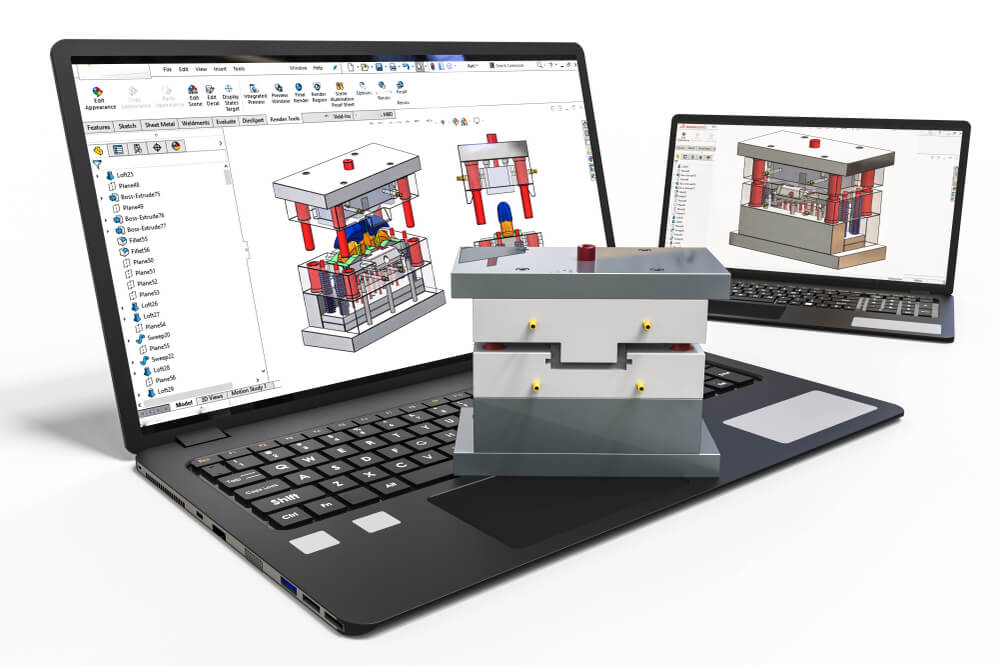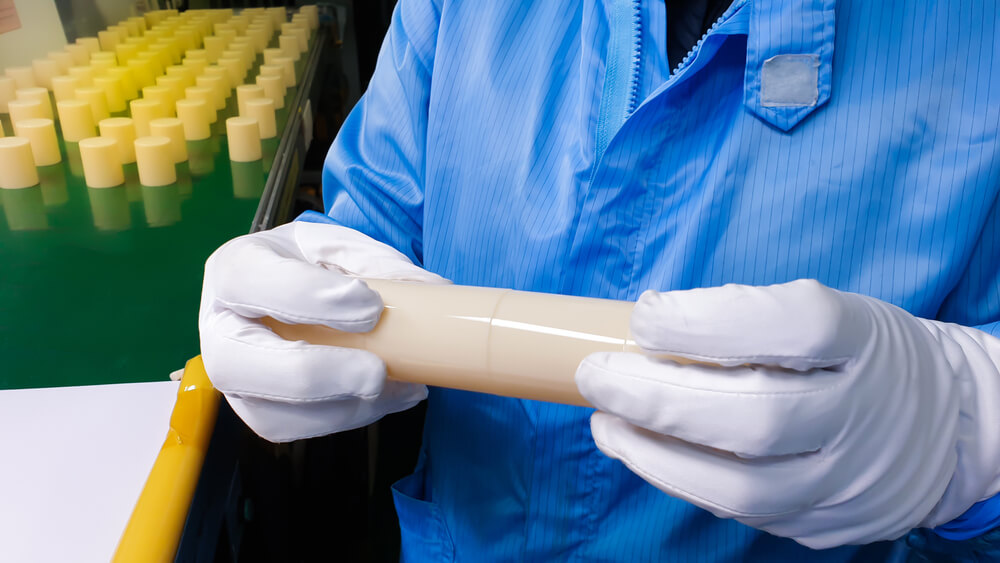Injection molding is a highly repeatable process that enables plastic manufacturers to produce large volumes of identical plastic parts with good tolerances at a low cost per part. However, during an injection molding process, the finished products' surfaces might have some concerns which are called weld lines or knit lines, and meld lines. What are these lines, how do they affect the product's quality, and what is the solution?
What Are Weld Lines, Knit Lines, and Meld Lines?
Weld lines, knit lines, and meld lines are terminologies to describe the imperfections of finished parts in plastic injection molding processing.
A weld line can also be called a knit line. It can be determined by a visible line appearing on the surface of the plastic part where two flows of the plastic meet. Instead of strongly welding, knitting, or merging together, these flows are slightly touching each other and create a new barrier preventing a strong bond.
Being slightly different, a meld line is a less visible line that also appears on the plastic surface when two plastic liquid flows meet. Instead of blending with each other, the two flows join together in a new direction to create a new flow.
These imperfections, in general, can decrease part durability by its molecule structure. Let's take a closer look into the differences between weld lines and meld lines to examine and find the right solutions for each type.
Weld and Meld Lines Differences
The distinctions between weld and meld lines can be specified by the joint angle of the two flows. A melt line will form if the converging angle value is larger than 135 degrees. While a weld line will happen if this angle value is less than 135 degrees.
The arrangement of molecules and their orientation are the foremost causes of the weld and meld lines differences. Let's take a look at what causes these imperfection lines.
What Causes Weld Lines?
The two flow fronts collide, but the polymer molecules not merging will create a weld line.
A thin frozen layer is gradually built up in the front part of each flow because another hot plastic flow comes and then is frozen. This layer acts like a wall causing parallel plastic weld orientation to the flow direction.
What Causes Meld Lines?
When two flow fronts merge at an oblique angle, they form a meld line. Therefore, the orientation of the plastic molecules is more consistent than the orientation following the formation of a weld line. Moreover, weld lines are typically more apparent and weaker than meld lines.
Weld Line Can be a Major Microstructural Defect
Weld, knit, or melt lines are undesired in injection molding, especially when part strength and surface quality are the most important considerations.
According to the transmission electron microscope (TEM) photo from research published on Plastic Technology, these lines are fragile since there is no polymer chain to bridge the weld line. The polymer chains even do not meet in some or perhaps even most places along the weld line.
Moreover, the weakest type among these fragile lines is typically the weld (or knit) lines since the material can easily separate from such a region.
The fragility brought on by this type of line can prevent the product from successfully serving its desired purpose.
Knit lines could alter how the original design appears because the surface appearance is misshapen. These lines can cause the finishing to look less attractive since a single knit line could draw attention to itself and distort the pattern.
Troubleshooting Weld Lines, Knit Lines, and Meld Lines
Since weld or knit lines, and meld lines can become major microstructural defects affecting the finished product quality and aesthetics, it is vital for businesses to take steps during design for manufacturability, material selection, and processing to avoid injection molding weld lines. By doing so, weld lines' impact on the component's appearance or part weakness can be minimized.
Weld, knit and meld lines during component design, like many other part flaws, are influenced by a few elements. Some of the eminent factors are:
1. Pressure
An expansive weld line may occur if the pressure is insufficient to drive the flow and cause it to melt back together. This problem may occur if the machine is damaged or set up incorrectly. It might also be the result of inappropriate mold production line design.
2. Temperature
Premature solidification may start if the temperature does not reach a certain required level. There is an inconsistent plastic flow as a portion may continue to flow while others may harden.
It is regular for the required temperature of the continuous resin flow to fluctuate at different points (for example, mold, runners to the mold, and the injection molding machine).
By adjusting the molding temperature, altering the gate pressure, and lengthening the dwell time, the operator of the molding machine can reduce the impacts of weld lines.
Besides these, adding a mold temperature controller can aid in regulating temperatures throughout the process: It better manages the fluidity and dimensional stability of molding materials, simultaneously preventing the crystallization of materials.
Therefore, businesses can introduce a mold temperature controller to monitor the correct temperature to prevent the weld lines.
3. Mold Design
The gate location has a significant impact on where a knit line or meld line will be located inside the part geometry. Using flow models, the potential locations of these imperfections can be foreseen. Therefore, by placing the gate position on the selected location, the knit lines and meld lines can also become essential for appropriate functionality.

4. Speed
The resin will move slowly through the mold at a modest speed. This implies that the front material of the flow could not cool at the same rate. Injection molding could develop knit lines if one front cools before it reaches the other.
5. Impurity
Impurities in the resin will prevent a smooth flow through the mold. This action could indicate that one portion of the plastic flow will move more quickly than the other.
6. Excess Mold Release
There might need to apply more pressure to the material to force it through the machine if the quantity of released mold is high. If not, the speed will decrease, and weld, knit or meld lines can occur.
Final Thoughts
For the injection molding process, solving one issue by focusing on a single factor or at a single point can lead to another concern. Therefore, it is essential to consider the entire system design to bring the best result. The design specification of the mold needs to consider all relevant aspects. To start optimizing your molding design and prevent imperfections like weld lines, knit lines, and meld lines, Contact Flying Tiger today.
Back







